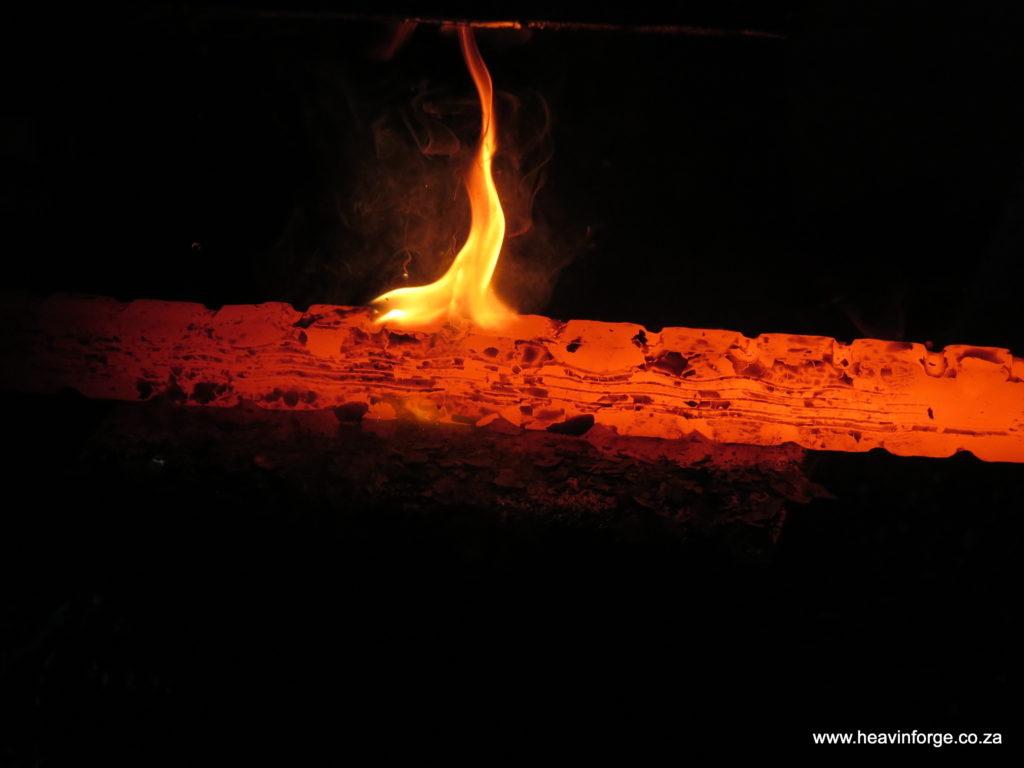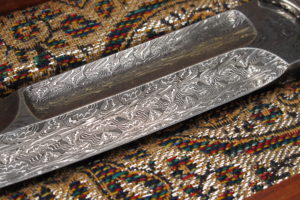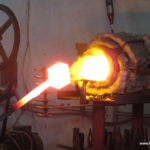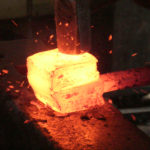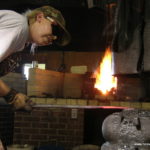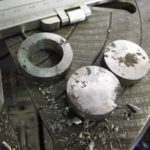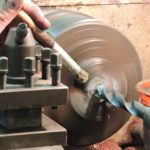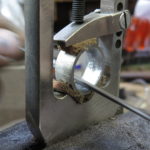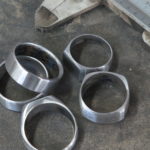About rings in damascus steel
What is damascus steel?
Over 2000 years ago man needed to create a strong steel. This he did by forge-welding and folding high and low carbon steels at high temperatures to create a steel that was flexible but hard enough to hold an edge. The pattern in the steel can be manipulated and is brought out by etching the steel in acid. Damascus steel was perfected by the Japanese and Vikings and it was believed to have magical properties. There are very few bladesmiths who make their own Damascus steel these days and it is a rare and collectible material usually used for knife blades. Examples of damascus blades from over a thousand years ago are still around, so your ring should last many lifetimes.
The making of your ring
When people ask us how long it takes to make a Damascus ring, we answer "30 years", as that is the time it has taken for us to perfect our craft, and we are still learning. We start by grinding clean high carbon steel, high nickel tool steel, and pure nickel. We start with about 5 to 9 layers which we then heat up in a gas forge to about 1 400 degrees C. We forge weld these layers together, draw them out to twice their original length and then fold the steel, doubling the layer count. This is repeated until we have between 150 to 300 layers. We then pattern the steel and flatten it again before it is annealed at 750 degrees C, cooling for 16 hours. We then acid pickle the steel to get rid of the fire scale. The steel is then surface ground and we begin marking out the ring. We start with a solid disc of steel and bore out the middle using a lathe. This is the only way we can achieve a solid ring without any joint, (the importance of a solid ring for a wedding band - no joint) it does mean however that most of the Damascus is then sacrificed to the "Damascus gods"! We then shape the outside of the ring, freehand on a grinder, shape the inside to give a "comfort fit", polish the inside and outside of the ring, degrease it and etch it in ferric chloride for a few hours. The ring is then buffed and waxed. It is a long, hot, labour-intensive process to reveal the beauty of the steel, but worth the effort.
- Damascus at forge welding temperature.
- Folding damascus steel.
- Heather Forging.
- Damascus ring blanks.
- Making damascus rings.
- Lathe work on damascus rings.
- Hand shaping damascus ring.
- Comfort fit preparation on damascus ring.
- Damascus rings before etching and lining.
How to care for your ring
Your ring should require no maintenance if worn 24/7. Damascus steel might rust if left lying in water. Please dry your ring well when you wash your hands. The heat from your hands will keep the ring dry. If you wear the ring all the time, it will pick up the oils from your skin and with the constant friction from wearing will keep the pattern bright, it will require little to no maintenance and should last many generations. If however, you store your ring for any length of time, rub a little Harvey's Conservation Wax (supplied with the ring) or Vaseline onto it to prevent rust. If your ring does pick up a bit of rust, just rub it with a little metal polish and wax it. The more you wear your ring, the more beautiful it will look. If you swim in the sea or sweat a lot, you might need to wax the ring more often.

